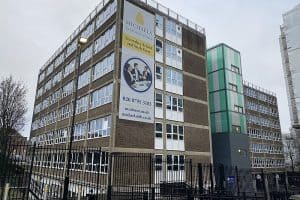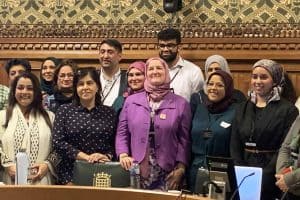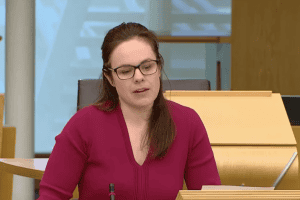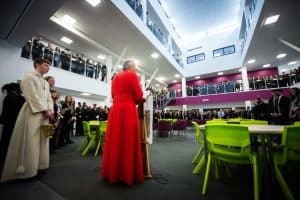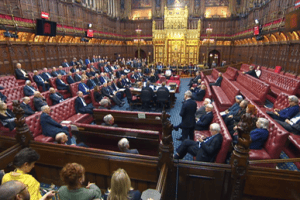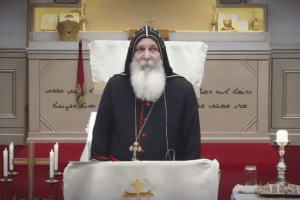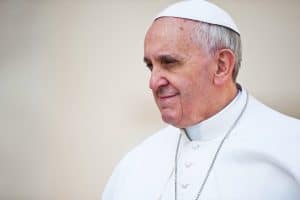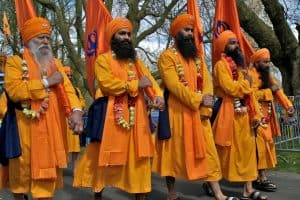The rituals, ceremonies and services surrounding the death of a king or queen are steeped in centuries of tradition in Britain. But they also break with tradition as new customs are created.
Such innovations will usually have been carefully thought through by the monarch or their family. Queen Elizabeth, for example, will have approved the marching of NHS staff behind her coffin.
But other developments owe more to chance or even accident. When the horses assembled to pull the gun carriage bearing Queen Victoria’s coffin refused to co-operate and bolted, sailors were co-opted to bear it from Westminster to Paddington. And so, a tradition was born, and became one of the key features that now distinguishes a state funeral from a ceremonial one: the gun carriage bearing Queen Elizabeth’s coffin will be hauled by 98 members of the Royal Navy known as the Sovereign’s Guard.
State funerals are reserved for monarchs and for the occasional political or military leader. Admiral Lord Nelson, the Duke of Wellington, and Sir Winston Churchill all had state funerals. They are organised by the Earl Marshal (a title held by the Duke of Norfolk since 1672) and his heralds and funded from the public purse. Ceremonial funerals for other members of the royal family are organised by the Lord Chamberlain, who belongs to the Royal Household.
The early modern period saw huge processions through London after the sovereign’s death. The British Library holds a drawing of Queen Elizabeth I’s funeral procession. It depicts a chariot bearing her effigy, pulled by four horses and accompanied by nobles and commoners. “Westminster was surcharged with multitudes of all sorts of people,” wrote the chronicler John Stow, “and when they beheld her lying on the coffin there was such a general sighing groaning and weeping as the like hath not been seen in the memory of man.”
One of the greatest spectacles of the 17th century was the funeral not of a king but of Oliver Cromwell, Lord Protector of England, Scotland and Ireland, who died in 1658. His funeral procession from Somerset House was led by the poet John Milton and took so long that by the time it arrived at Westminster Abbey it was already evening. No one had ordered any candles and the proceedings took place in darkness.
The funeral of Elizabeth II will be the first of a monarch to be held at Westminster Abbey since George II’s in 1760. Thereafter, royal funerals moved to St George’s Chapel, Windsor. Although they still involved processions through Westminster, they were generally quieter affairs. When monarchs’ visibility increased again in the 19th and 20th centuries, it was in inverse proportion to the power of the monarchy, according to Lord Chartres, who served as Bishop of London from 1995 to 2017.
Lord Chartres describes the competition among European powers to outdo one another in public ceremonial as a sort of “heraldic arms race”. Queen Victoria, the most private of monarchs, did not approve of such developments, he says. “She was Hanoverian in her love of privacy and left very precise instructions about her funeral. She wanted to be buried as a soldier’s daughter.
“So, people who might have been expected to accompany the monarch to her resting place were excluded. The increased military presence at her funeral set a precedent for the future,” he says.
Another precedent broken at Victoria’s funeral was the attendance of the successor, in this case King Edward VII. Although Charles I had acted as chief mourner at the funeral of his father, James I of England, the custom was for new monarchs to stay away from the funeral of their predecessor.
The Book of Common Prayer (1662, revised 1928) provides the backbone for the royal funeral service. It comprises seven “sentences” from the Scriptures. They begin with the words from St John’s Gospel: “I am the resurrection, and the life: he that believeth in me, though he were dead, yet shall he live: and whosoever liveth and believeth in me shall never die.”
Traditionally three of the sentences are delivered at the opening of the service, three more at the graveside and one after the burial, but the liturgy has relaxed with the separation of the funeral and burial sites. The sentences were set to music by William Croft in the early 18th century.
Dr Matthias Range, author of British Royal and State Funerals: Music and Ceremonial since Elizabeth I, said: “Queen Victoria’s funeral was the first for which a specific order of service was printed.
“We have printed orders of service for coronations since 1727 [for George II] but none for royal funerals until 1901. Before that they just used the Prayer Book because that is what you were supposed to do. Queen Victoria’s service also followed the Prayer Book exactly but personalised details of the occasion were added in the order of service. There is no coronation service in the Prayer Book so special arrangements had to be made.”
Following the great era of British hymn writing in the late 18th and 19th centuries, King Edward VII’s state funeral in 1910 saw another innovation with the introduction of congregational singing. Two hymns were sung: My God, My Father While I Stray and Now the Labourer’s Task Is O’er.
“Before that there was the understanding that congregational hymn singing was inappropriate and would destroy the special atmosphere of the funeral service,” Dr Range said.
Westminster Abbey saw another royal funeral with the death of Queen Alexandra, widow of Edward VII, in 1925. “But this was really accidental because St George’s, Windsor, was being renovated at the time,” Dr Range said. “So, she had the first half of the funeral there followed by a public lying in state at the altar steps. Later she was then taken to Windsor for burial.”
When Queen Mary, widow of George V, died in March 1953, there was much discussion about where her coffin should lie in state. Eventually Westminster Hall was chosen over the abbey because preparations were under way at the abbey for the coronation of her granddaughter, Queen Elizabeth, in June.
“You find that many of the things that we think of as perfectly planned were completely accidental. You could say the same now with the lying in state of the Queen at St Giles’ Cathedral Edinburgh. That wasn’t part of the plan. It only happened because the Queen died in Scotland,” Dr Range said.
The funerals of Diana, Princess of Wales, Princess Margaret and Queen Elizabeth the Queen Mother marked the return of royal funerals to Westminster Abbey. Prince Philip’s funeral took place at St George’s, Windsor, probably because the country was in the grip of the Covid pandemic.
At the end of his funeral service his coffin was lowered into the Royal Vault. He and the Queen will be laid to rest together in the King George VI Memorial Chapel on Monday evening.


